Who Discovered The Earth is Round?
If you were taught it was Christopher Columbus, you aren’t alone. But just how much we knew thousands of years ago may surprise you!
“When Columbus lived, people thought that the earth was flat. They believed the Atlantic Ocean to be filled with monsters large enough to devour their ships, and with fearful waterfalls over which their frail vessels would plunge to destruction. Columbus had to fight these foolish beliefs in order to get men to sail with him. He felt sure the earth was round.”
–Emma Miler Bolenius, American Schoolbook Author, 1919
One of the most enduring myths that children grow up with is the idea that Columbus was the only one of his time who believed that the Earth was round; everyone else believed it was flat. “How brave the sailors of 1492 must have been,” you might imagine, “to travel towards the edge of the world without fear of falling off!”
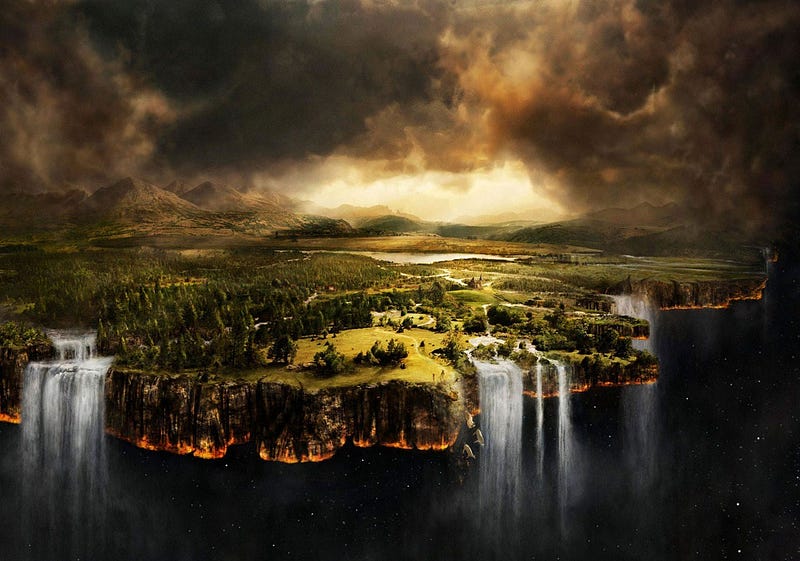
Indeed, there are many ancient references to the Earth being shaped like a disc. And if you knew only of the two most important astronomical objects in the sky — the Sun and the Moon — you yourself might reach the same conclusions.
If you go outside during sunset a day or two after the new moon, here’s the sight you’re likely to encounter.

A thin sliver of Moon, where the brightly illuminated portion appears to coincide with the same portion of a sphere that could be lit up by the Sun. You can see the remainder of it, the non-luminous part, very clearly in a disk-like shape.
If you were both curious and scientifically-minded, you might go out after sunset during the next few days to see what happened next. In fact, if you were to go outside and look for the Moon in the sky at the same exact time each night, you’d notice two things changing day-after-day.
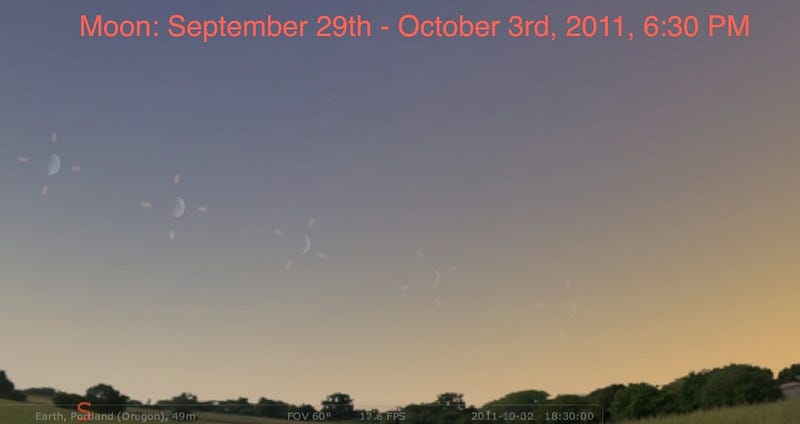
Not only does it appear to shift position by about 12 degrees each night, moving away from the location of the setting Sun, but it appears that progressively more and more of it gets illuminated! If you go out tonight, you’ll see a Moon that’s more than half full, and each night until the full Moon, more and more of it gets filled in, and it starts out the night farther towards the east. And you might (rightly) conclude that perhaps the Moon orbits the Earth, and that its apparent change in phase is caused by light from the Sun illuminating different parts of a spherically-shaped Moon.
In fact, this is both the ancient and modern view of what causes the phases of the Moon.
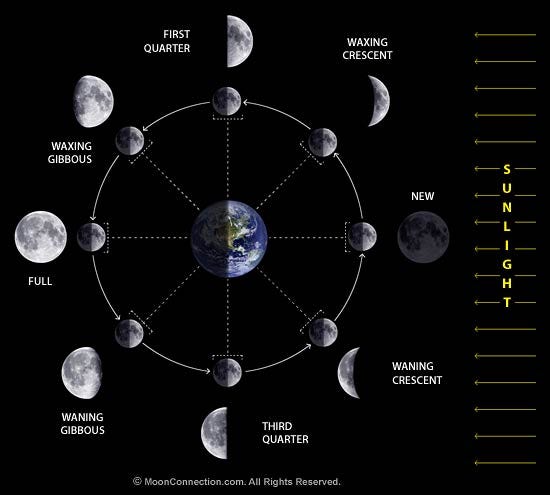
But about twice a year, something special happens during the Full Moon that allows us to determine something about the shape of the Earth: a lunar eclipse! When the Moon is full and the Earth passes directly between the Sun and the Moon, the Earth’s shadow shows up on the Moon’s surface!
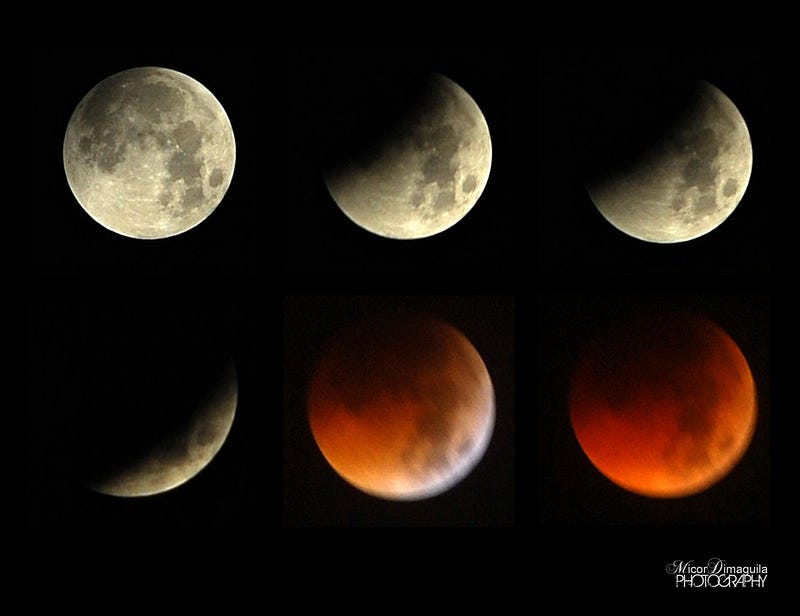
And if you look at the shadow that actually shows up on the surface of the Moon, you can clearly see that the Earth’s shadow is curved, and shaped like a disc. If you stitched multiple pictures of Earth’s shadow on the Moon together, you could even piece together the relative size of Earth’s shadow on the surface of the Moon.
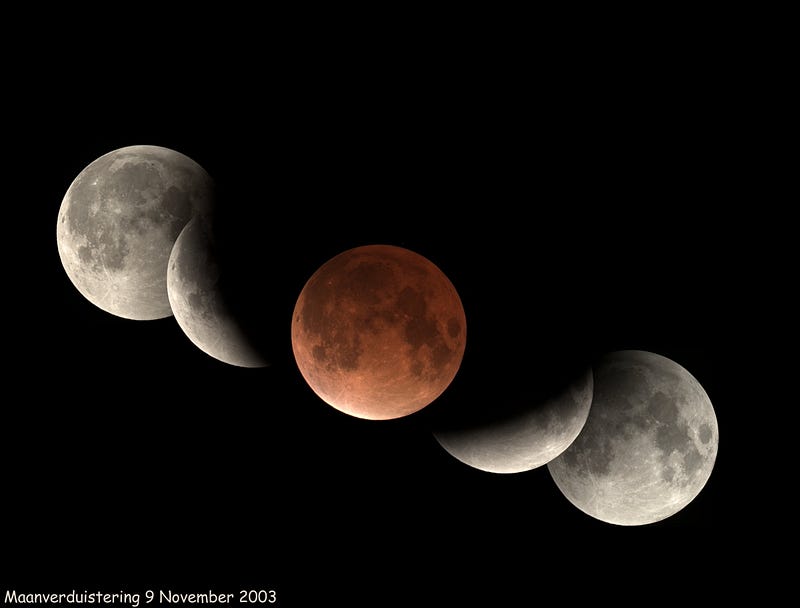
But this doesn’t tell you whether the Earth is a flat disc or a round sphere; it only tells you that the shadow cast by the Earth is circular. In principle, just from looking at the Moon, the Earth could be either flat or round.
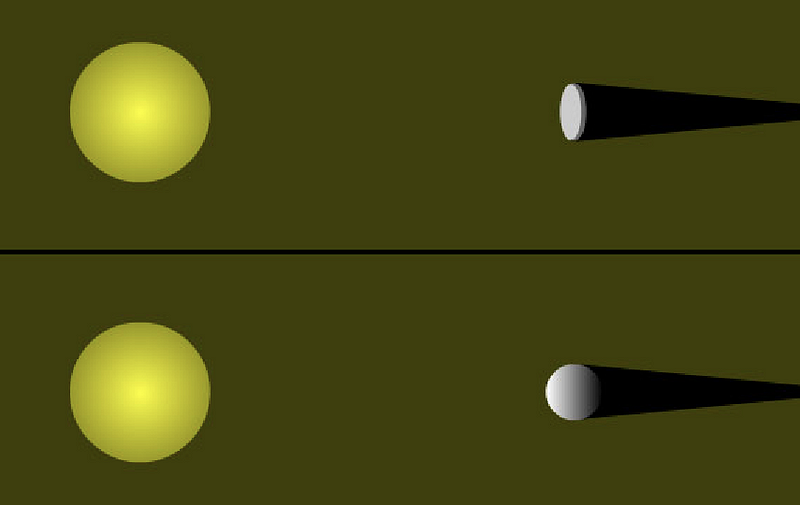
You might think that Columbus went out on a limb by assuming the Earth was round, or that it was Magellan who proved it for certain a few years later with his global circumnavigation. After all, according to Robert Ingersoll, it was Magellan himself said,
“The church says the earth is flat, but I know that it is round, for I have seen the shadow on the moon, and I have more faith in a shadow than in the church.”
But contrary to popular belief, this question wasn’t settled in the 1400s and 1500s (with the circumnavigation of the globe), but more than 2,000 years ago, in the ancient world! And what’s perhaps most amazing? It was done using nothing more than the Sun. Here’s how.
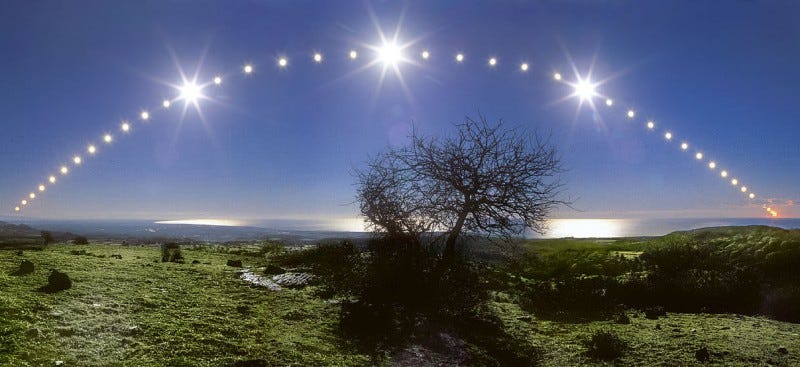
If you follow the Sun’s path through the daytime sky, and you live in the Northern hemisphere, you’ll find that it rises in the eastern part of the sky, rises up to its apex in the south, and then lowers and sets in the west. And it does this every day of the year.
But it doesn’t take the exact same path every day out of the year; the Sun reaches a much higher point (and shines for more hours during the day) during the summer months, and reaches a significantly lower point (and shines for fewer hours) during the winter. To dramatically illustrate this, here’s a time-lapse photo of the Sun’s path through the sky taken during the winter solstice in Fairbanks, Alaska.

In fact, if you charted out the Sun’s path through the daytime sky, you would find that it takes its lowest path (for the fewest number of hours) on the Winter Solstice — usually December 21st — and its highest path (for the greatest number of hours) on the Summer Solstice, usually June 21st.
If you constructed a camera capable of photographing the Sun’s path through the sky over the course of the year, you would find exactly this: a series of arcs, where the highest, longest arc through the sky was made during the Summer Solstice and the lowest, shortest arc was made during the Winter Solstice.
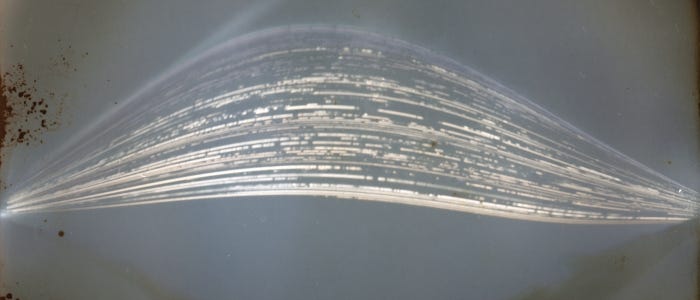
And in the ancient world, the greatest scholars and scientists from Egypt, Greece, and all over the Mediterranean went to work at the Library of Alexandria. One of these scientists was the Ancient Greek Astronomer, Eratosthenes of Cyrene.

While living in Alexandria, Eratosthenes received some amazing correspondence from the city of Syene in southern Egypt. In particular, it said that, on the Summer Solstice,
the shadow of someone looking down a deep well would block the reflection of the Sun at noon.
In other words, the Sun would be directly overhead at this time, not a single degree to the South, North, East or West. And if you had a completely vertical object, it would cast absolutely no shadow. As you can see, below there are indeed places in there world where this is the case.

But Eratosthenes knew that this wasn’t the case where he was, in Alexandria. Sure, the Sun came closer to being directly overhead at Noon on the Summer Solstice in Alexandria than at any other time during the year, but vertical objects still cast shadows.
And — like any good scientist — Eratosthenes did the experiment. By measuring the length of the shadow cast by a vertical stick during the solstice noon (when the shadow was shortest), he could figure out what angle the Sun made with the vertical direction at Alexandria.
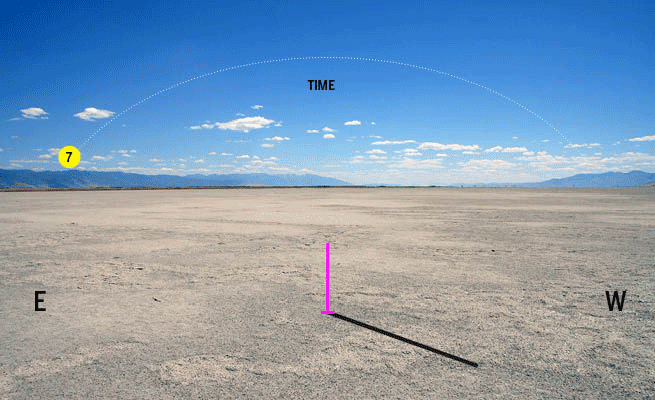
And the answer he got was one-fiftieth of a circle, or 7.2 degrees. But at this time, in Syene, the angle the Sun was making with an identical vertical stick was zero degrees! What could be causing this? In perhaps a stroke of genius, Eratosthenes realized that the Sun’s rays could all be parallel, and that the Earth could be curved!

If he could then figure out the distance from Alexandria to Syene, since he knew the angular difference between the two cities, he could figure out the circumference of the Earth! If only Eratosthenes had a grad student, he could have sent one to make the trip, and measure the distance!
Instead, he was forced to rely on the reported distance between the two cities. The most “precise” measurement of his day?

Travel-by-camel. (So I can understand criticisms of his accuracy.) Nevertheless, his results were that the distance between Syene and Alexandria were 5,000 stadia. The question, of course, is how big is a stadium? The answer depends, of course, on whether Eratosthenes, a Greek living in Egypt, was using an Attic stadium or an Egyptian stadium, something still debated among historians. An Attic stadium was used more commonly, and is 185 meters in modern terms. Using this value, one gets a circumference of the Earth of 46,620 kilometers, a number that’s only about 16% bigger than the actual value.
However, an Egyptian stadium is 157.5 meters, and it’s conceivable that’s what Eratosthenes meant. In that case, we get a value of 39,375 kilometers, which is off by less than 2% from the modern value of 40,041 km!
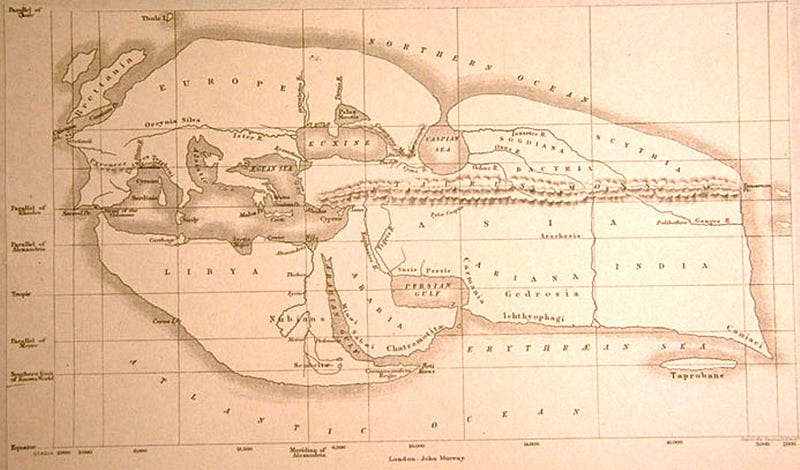
Regardless of what the actual values were, Eratosthenes went on to become the world’s first geographer, inventing the concepts of latitude and longitude that we still use today, and constructed the first models and maps based on a spherical Earth.
Although many things were “lost” during the subsequent millennium-and-a-half, neither the idea of a spherical Earth nor the rough knowledge of the Earth’s circumference were one of them. In fact, anyone can perform this same experiment today with two locations at the same longitude, and with simultaneous measurements of shadow lengths, you too can measure the circumference of the Earth! Not bad, considering that the first direct, photographic evidence of the Earth’s curvature would not arrive until 1946!
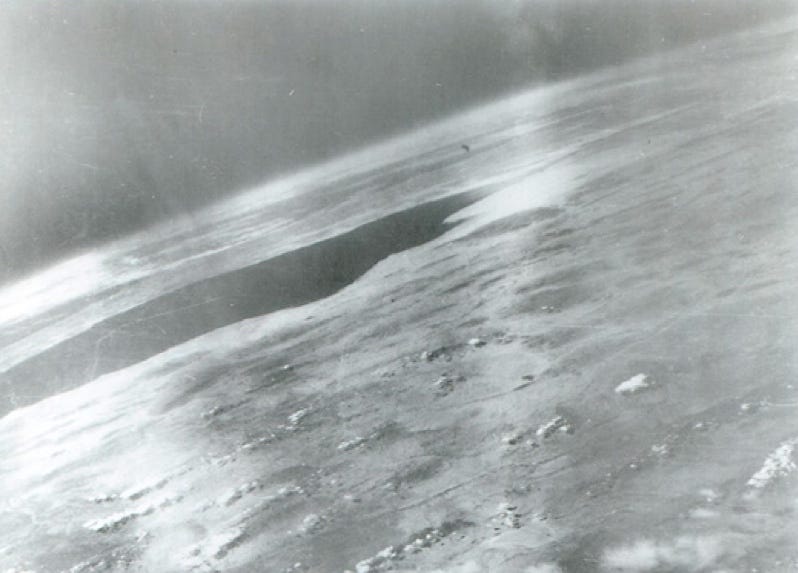
Once we knew the shape and size of the Earth — from about 240 B.C. — we were able to figure out all sorts of remarkable things, including the size of and distance to the Moon! So give the credit where credit is due, to Eratosthenes, for discovering the Earth was round, and performing the first accurate calculation of its size!
If there’s anything scientific that Columbus should be known for, as respects the size and shape of the Earth, it was using unrealistically low numbers for the circumference of the Earth! His estimates, that he used to convince others that one could sail from Europe directly to India (were the Americas non-existent), were absurdly small! Had the Americas not existed, Columbus and his crew surely would have starved before reaching Asia!
An earlier version of this post originally appeared on the old Starts With A Bang blog at Scienceblogs.





